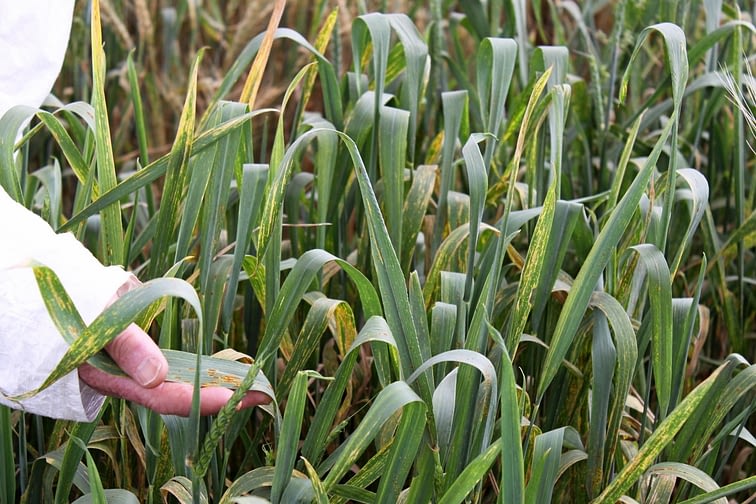Adult plant resistance (APR): the strategy to beat persistent pathogens
CIMMYT’s decision to focus on APR genes versus race-specific genes (R-genes) protects the livelihoods of millions of smallholder wheat farmers throughout Africa, Asia, and Latin America.
This piece by Sridhar Bhavani was originally published on the CIMMYT Website. View the original here.

The three rust diseases, yellow (stripe) rust, black (stem) rust, and brown (left) rust occur in most wheat production environments, causing substantial yield losses and under serious epidemics, can threaten the global wheat supply.
CIMMYT is one of the largest providers of elite germplasm to national partners in over 80 countries. CIMMYT nurseries, known for research in developing adaptive, high-yielding and high-quality germplasm, also carry resistance to several biotic and abiotic stresses, such as rust disease.
Through years of research and experience, CIMMYT has found that durable control of wheat rusts can be achieved by developing and deploying wheat varieties with complex adult-plant resistance (APR). A combination of both conventional and modern technologies in APR will enable breeders to address the problem of rusts and other diseases and continue progress in delivering higher genetic gains, a key goal of the Accelerating Genetic Gains in Maize and Wheat (AGG) project.
Learn more about CIMMYT’s APR strategy: CIMMYT Strategy for Adult Plant Resistance (APR)
For more information on CIMMYT’s APR strategy, contact CIMMYT’s Head of Wheat Rust Pathology and Molecular Genetics, Sridhar Bhavani.




